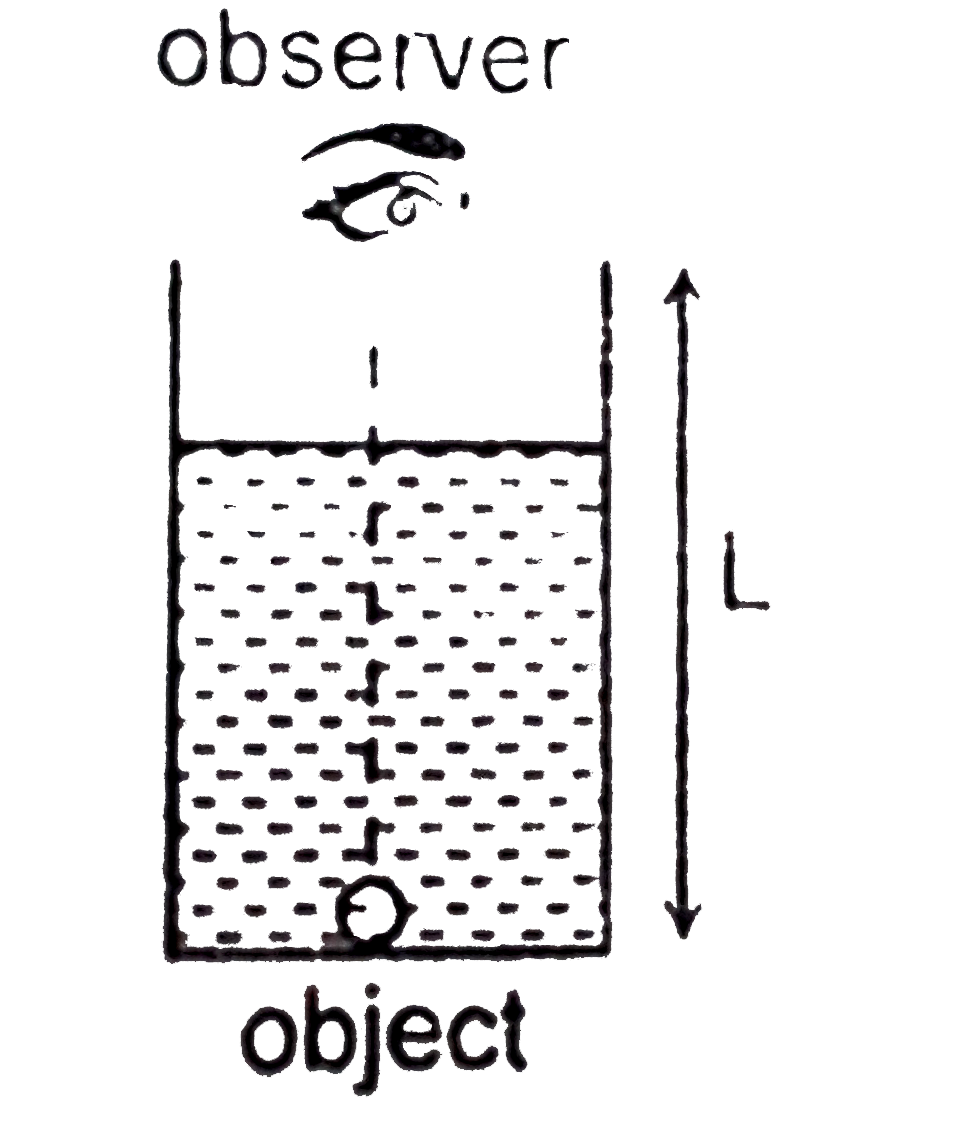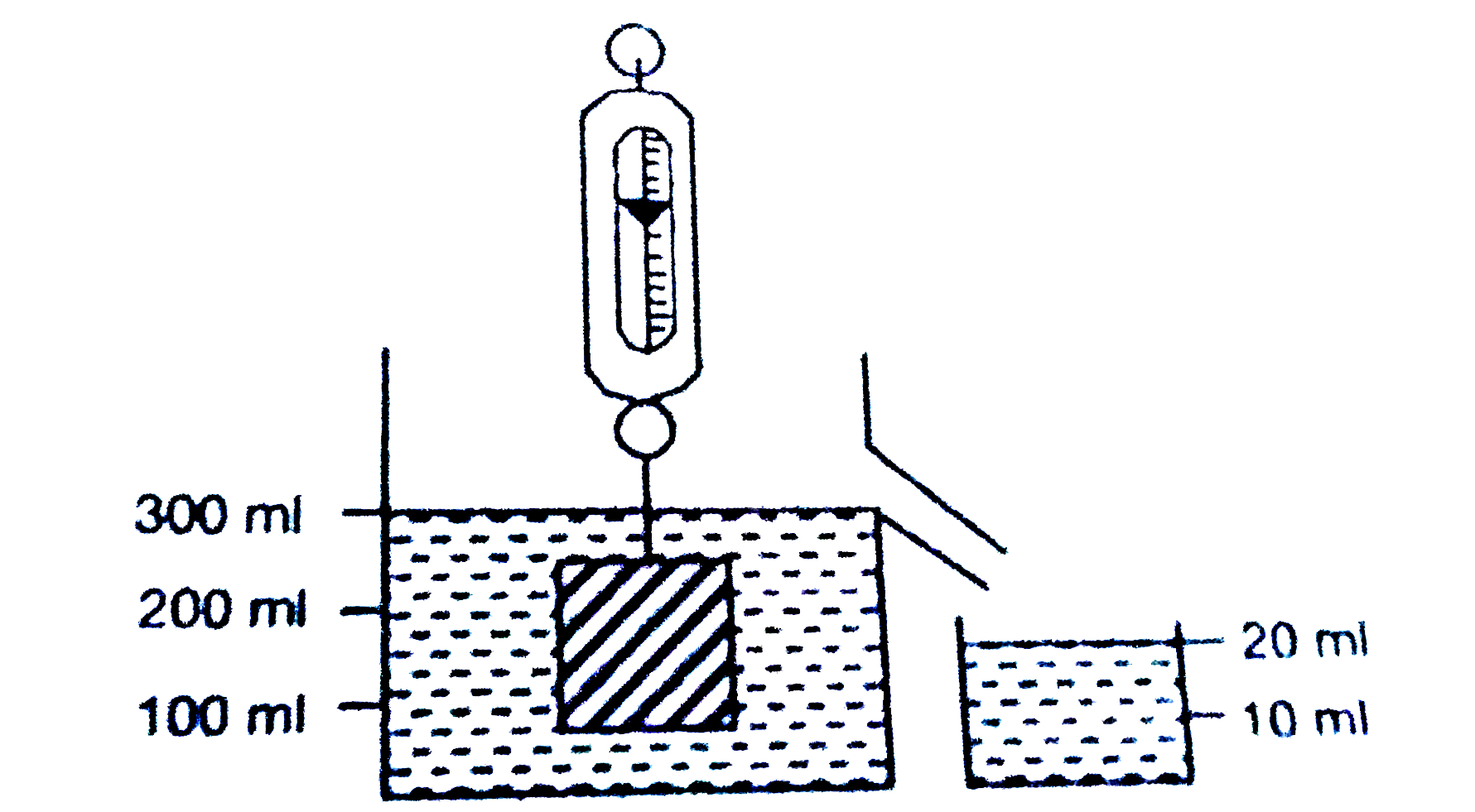Consider an extended object immersed in water contained in a plane through. When seen from close to the edge of the through, the object looks distorted because.
the apparent depth of the points close to the edge is nearer the surface of the water compared to the points away from the edge.
the angle subteded by the image of the object at the eye is smaller than the actual angle subtended by the object in air.
some of the points of the object far away from the edge may not be visible because of total internal reflection.
water in a trough acts as a lens and magnifies the object.
The correct Answer is:A, B, C
The object looks distorted due to refraction of light from denser to rarer medium. The apparent depth of the points close to the edge and nearer to the surface of water is more as compared to the points away from the edge. Further, the angle subtended by the image of the object at the eye is smaller than the actual angle subtended by the object in air. Again, some of the points may not be visible because of TIR. The correct options are (a), (b) and (c).
Topper's Solved these Questions
- RAY OPTICS AND OPTICAL INSTRUMENTSBOOK - MODERN PUBLICATIONCHAPTER - RAY OPTICS AND OPTICAL INSTRUMENTSEXERCISE - NCERT (Exemplar Problems Subjective Questions) (Very Short Answer Type Questions)
11 Videos
- RAY OPTICS AND OPTICAL INSTRUMENTSBOOK - MODERN PUBLICATIONCHAPTER - RAY OPTICS AND OPTICAL INSTRUMENTSEXERCISE - Higher Order Thinking Skills & Advanced Level (QUESTIONS WITH ANSWERS)
20 Videos
- RAY OPTICS AND OPTICAL INSTRUMENTSBOOK - MODERN PUBLICATIONCHAPTER - RAY OPTICS AND OPTICAL INSTRUMENTSEXERCISE - NCERT (EXemplar Problems Obejective Questions) (Multiple Choice Questions (Type-I)
10 Videos
- NUCLEIBOOK - MODERN PUBLICATIONCHAPTER - NUCLEIEXERCISE - CHAPTER PRACTICE TEST FOR BOARD EXAMINATION
15 Videos
- SEMICONDUCTOR ELECTRONICS METERIALS DEVICES AND SIMPLE CIRCUITS BOOK - MODERN PUBLICATIONCHAPTER - SEMICONDUCTOR ELECTRONICS METERIALS DEVICES AND SIMPLE CIRCUITS EXERCISE - CHAPTER PRACTICE TEST FOR BOARD EXAMINATION
12 Videos
Similar Questions
Knowledge Check
When a solid object is immersed in water, there is a loss in its weight. This loss is
Aequal to the weight of the water displacedBless than the weight of the water displacedCgreater than the weight of the water displacedDnot related to the weight of the water displacedA cylinder is filled with a liquid of refractive index μ. The radius of the cylinder is decreasing at a constant rate K. The volume of the liquid inside the container remains constant at V. The observer and the object O are in a state of rest at a distance L from each other. When radius of cylinder is r the apparent velocity of the object as seen by the observer is
 A(1−μ)2KV(πμr3)B(1−μ)2KV(πμlr2)C(1−μ)2KμD(1−μ)K2μ
A(1−μ)2KV(πμr3)B(1−μ)2KV(πμlr2)C(1−μ)2KμD(1−μ)K2μElectrical charge can be transferred from a charged object to another through
AvacuumBairCinsulatorDconductor
A solid object when seen from one side, looks like this
 . The same solid, when seen from top, looks like this
. The same solid, when seen from top, looks like this  Name the object.
Name the object.
View SolutionOne end of a cylindrical glass rod (mu = 1.5) of radius 1.0 cm is rounded in the shape of a hemisphere. The rod is immersed in water (mu= 4/3) and an object is placed in the water along the axis of the rod at a distance of 8.0 cm from the rounded edge. Locate the image of the object.
View SolutionAn object suspended from a spring balance is immersed in water filled inside an overflow jar. The water displaced by the object is collected in an empty beaker placed below the spout of the overflow jar.
If the reading on the spring balance is 180 gwt, then calculate the pressure exerted due to the immersion of object at the bottom of the container. Will there be any change in pressure at the lower, if the object is dropped into water ?
The height of the overflow jar upto the spout is 10 cm and the area of the lower face of the block is 4 cm2.

View SolutionAn object looks red when seen through a piece of red glass. What is the actual colour of the object?
View SolutionThe apparent depth of an object plaecd in a denser medium and seen through a rarer medium is ………… .
View Solution

